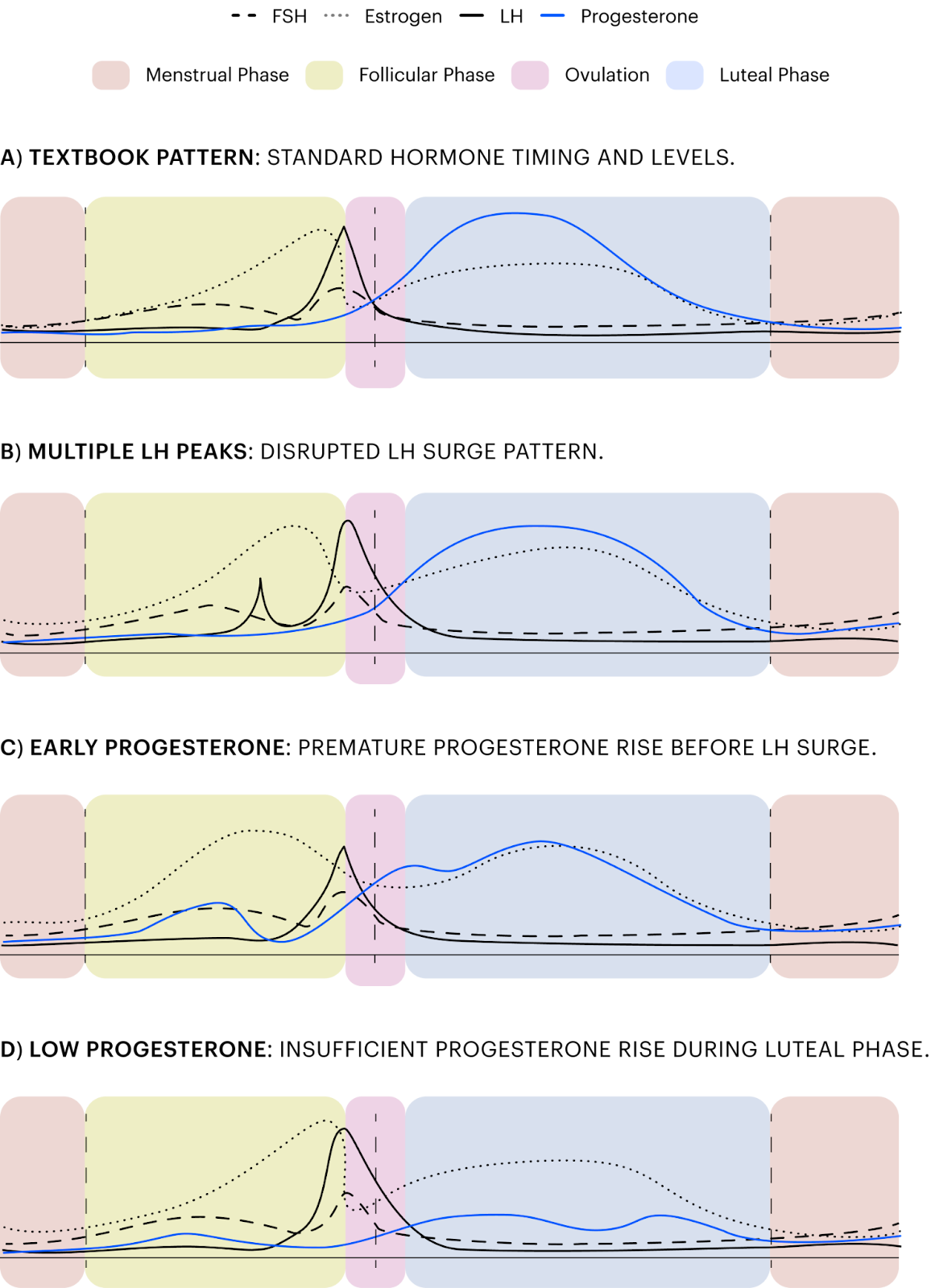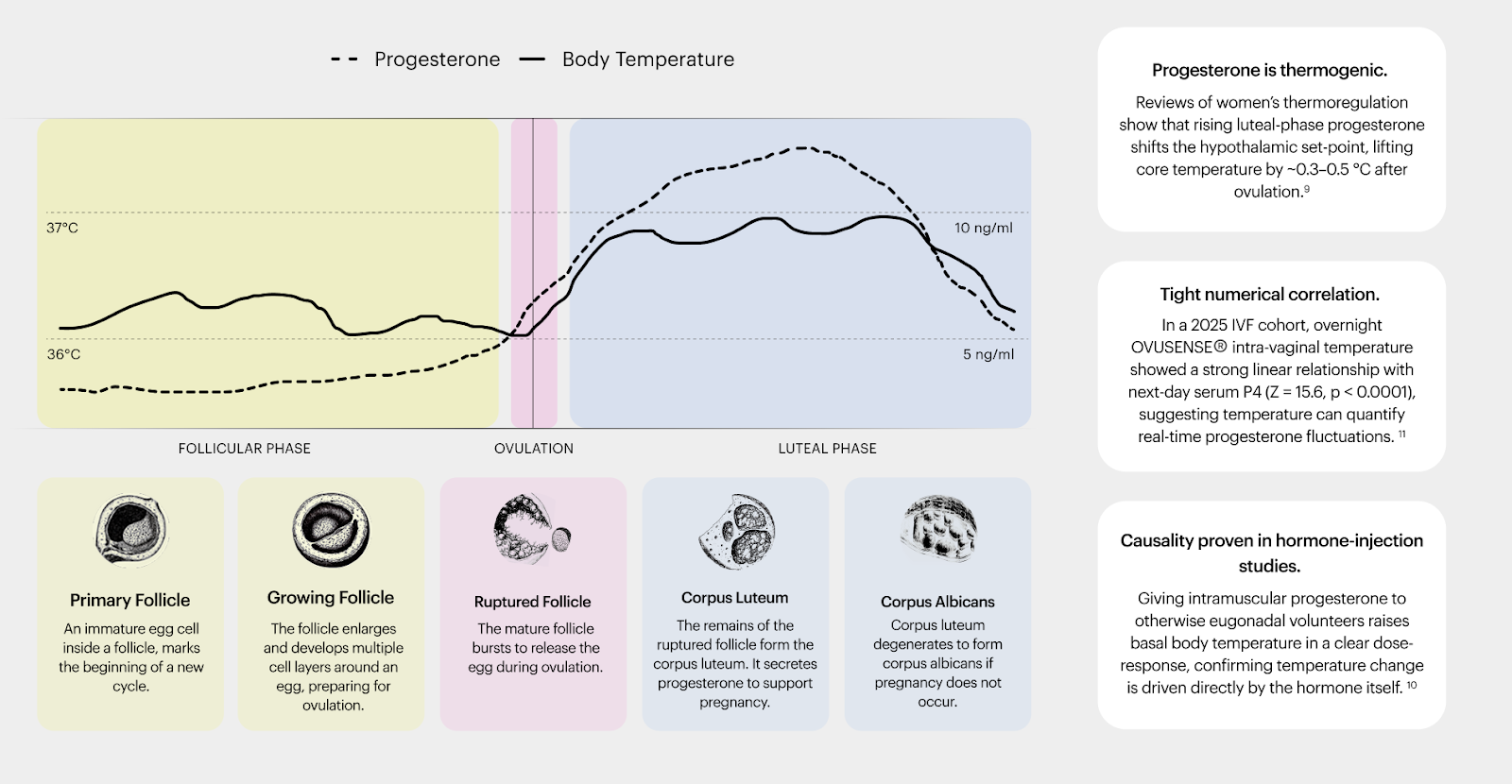a Ultrahuman Healthcare Pvt. Ltd., India
b viO HealthTech Ltd., United Kingdom


Compatibility tests were run in two scenarios.



Women’s menstrual cycles have long been oversimplified, and this lack of nuance often leads to delayed recognition of health changes, allowing preventable disease states to go unaddressed until a major medical event occurs. With the OvuSense advanced, medically proven algorithm, C&O Pro expands the power of Ultrahuman’s women’s health tracking by:
The side-by-side comparison of the OvuSense SWS and external anchoring of ovulation confirmation using the multi-metabolite urine test demonstrates the seamless integration of the OvuSense algorithm with the Ultrahuman Ring AIR’s temperature-sensing capabilities. Additionally, a cross-sectional analysis was conducted in a separate white paper to survey the prevalence of cycle flags within the current Ultrahuman women users. The full findings can be found here.
In summary, by integrating clinically validated insights into the everyday functionality of the Ultrahuman Ring AIR, accessing your body’s hidden signals and translating them into clear, actionable feedback has never been easier. This means fewer surprises, faster answers, and most importantly, the confidence to proactively take charge of your hormonal health long before problems arise.
Disclaimer: Cycle and Ovulation Pro involves data streams from Ultrahuman Ring AIR and visualizes insights generated by the OvuSenseTM algorithm on the Ultrahuman app. It is not a diagnostic tool and is not intended for contraception, conception planning, or medical diagnosis. This white paper is provided “as is” without any express or implied warranties.
Reach out to partnerships@ultrahuman.com for commercial queries and science@ultrahuman.com for scientific queries.
1. CAH Care, (2015). Menstruation in girls and adolescents: using the menstrual cycle as a vital sign. Obstet. Gynecol, 126, e143-e146. PMID: 26595586 DOI: 10.1097/AOG.0000000000001215
2. Vollmar, A. K. R., Mahalingaiah, S., & Jukic, A. M. (2024). The Menstrual Cycle as a Vital Sign: a comprehensive review. F&S Reviews, 100081. PMID: 39906529 DOI: 10.1016/j.xfnr.2024.100081
3. Bull, J. R., Rowland, S. P., Scherwitzl, E. B., Scherwitzl, R., Danielsson, K. G., & Harper, J. (2019). Real-world menstrual cycle characteristics of more than 600,000 menstrual cycles. NPJ digital medicine, 2(1), 83. PMID: 31482137 PMCID: PMC6710244 DOI: 10.1038/s41746-019-0152-7
4. Teede, H. J., Tay, C. T., Laven, J., Dokras, A., Moran, L., Piltonen, T., ... & Joham, A. E. (2023). International evidence-based guideline for the assessment and management of polycystic ovary syndrome 2023. PMID: 37580314 DOI: 10.1210/clinem/dgad463
5. Li, H., Gibson, E. A., Jukic, A. M. Z., Baird, D. D., Wilcox, A. J., Curry, C. L., ... & Mahalingaiah, S. (2023). Menstrual cycle length variation by demographic characteristics from the Apple Women’s Health Study. NPJ Digital Medicine, 6(1), 100. PMID: 37248288 DOI: 10.1038/s41746-023-00848-1
6. Riaz, Y., & Parekh, U. (2020). Oligomenorrhea. PMID: 32809410
7. Frank-Herrmann, P., Jacobs, C., Jenetzky, E., Gnoth, C., Pyper, C., Baur, S., ... & Strowitzki, T. (2017). Natural conception rates in subfertile couples following fertility awareness training. Archives of gynecology and obstetrics, 295, 1015-1024. PMID: 28185073 DOI: 10.1007/s00404-017-4294-z
8. Stanford, J. B., Willis, S. K., Hatch, E. E., Rothman, K. J., & Wise, L. A. (2019). Fecundability in relation to use of fertility awareness indicators in a North American preconception cohort study. Fertility and sterility, 112(5), 892-899. PMID: 31731946 DOI: 10.1016/j.fertnstert.2019.06.036
9. Baker, F. C., Siboza, F., & Fuller, A. (2020). Temperature regulation in women: effects of the menstrual cycle. Temperature, 7(3), 226-262.PMID: 33123618 DOI: 10.1080/23328940.2020.1735927
10. Rai, A. K., Singh, A., & Neelabh. (2023). Progesterone: Thermogenic Effect. In Encyclopedia of Sexual Psychology and Behavior (pp. 1-5). Cham: Springer International Publishing. DOI: 10.1007/978-3-031-08956-5_245-1
11. Knowles, T. G., García-Velasco, J. A., Toribio, M., Garrido, N., Barrio Pedraza, A. I., Colomé Rakosnik, C., ... & Milnes, R. (2025). Continuous overnight monitoring of body temperature during embryo transfer cycles as a proxy for establishing progesterone fluctuations by comparison with P4 blood progesterone results: a prospective, observational study. Reproductive Biology and Endocrinology, 23(1), 17. PMID: 39901176 DOI: 10.1186/s12958-024-01329-0
12. https://www.ovusense.com/uk/approvals/ Accessed on 26th May, 2025.
13. Papaioannou, S., Delkos, D., Pardey, J., Milnes, R. C., & Knowles, T. G. (2014). Vaginal core body temperature assessment identifies pre-ovulatory body temperature rise and detects ovulation in advance of ultrasound folliculometry. In Human Reproduction (Vol. 29, pp. 219-220).
14. Hurst, B.S., Davies, K., Milnes, R.C., & Knowles, T. G. (2022). Novel technique for confirmation of the day of ovulation and prediction of ovulation in subsequent cycles using a skin-worn sensor in a population with ovulatory dysfunction: a side-by-side comparison with existing basal body temperature algorithm and vaginal core body temperature algorithm. Frontiers in Bioengineering and Biotechnology, 10, 807139. PMID: 35309997 DOI: 10.3389/fbioe.2022.807139